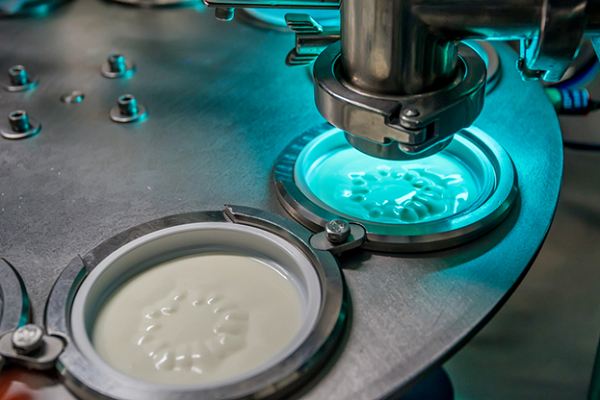
Cheese, ice cream, yogurt—when it comes to dairy products, there’s a seemingly endless variety around. This is because milk can be processed in many different ways to produce some of the most popular foods in any supermarket. The technology behind some of these creations is so unique that it makes you wonder how it was first created. For instance, one of the theories put forward for the initial creation of yogurt goes back to a story thousands of years ago. It’s suggested that milk was stored in bags made from animal intestines, and that natural enzymes and bacteria caused the milk to thicken.
The theory has stood the test of time, and live bacteria are now used for the creation of yogurt. These bacteria don’t pose any threat to human health, and yogurt is actually hailed for its positive impact on the body. Production of this dairy product can be quite technical, so here’s a useful guide for people aspiring to a career in the food industry.
Heat Milk During Pasteurization to Kill Harmful Organisms
Regular milk is often pasteurized before public sale. This is done to remove potentially harmful bacteria that could be present, so that consumers can feel confident in its safety. Pasteurization isn’t unique to commercial milk operations, though. It is also an essential step during the creation of yogurt because of its role in killing off pathogens. Pasteurization involves heating the batch at 180 degrees Fahrenheit (82 degrees Celsius) for 30 minutes. In addition to killing off harmful bacteria, it also evaporates some of the milk’s water content.
Students learning about food technology should also note the more complex biological aims which pasteurisation achieves during yogurt production. Some of the whey proteins in milk are broken down at these high temperatures and start mixing together with casein proteins. This causes necessary clumping in the milk which helps to form the thick yogurt texture.

Sophisticated milk pasteurization equipment is used to make yogurt
Fermentation Gives Yogurt its Distinct Texture and Taste
Once pasteurisation is complete, the milk is then cooled down to around 110 degrees Fahrenheit (43 degrees Celsius) as part of the fermentation process. Live bacteria are added to the milk at this point, and there is strict regulation surrounding what must be used during this process. Canada, like many other countries, requires that all yogurt contain the bacteria Lactobacillus bulgaricus and Streptococcus thermophilus. Additional bacteria can be used during the production process to create yogurts with different flavours or textures.
The bacteria are added to the milk to convert lactose sugars into lactic acid, thus lowering the pH of the product and creating the tangy flavour that we associate with the food. This fermentation process also changes the structure of casein proteins, converting it into a thicker dairy product. Once complete, special flavourings or ingredients can be added before it’s packaged and distributed to retailers.

Fresh, creamy yogurt being packaged in a production plant
Graduates of Food Safety Training May Know of Yogurt’s Health Benefits
A comprehensive food safety training program teaches students about the many ill effects of bad bacteria, but the kind used in yogurt production can be beneficial. Live microorganisms, called probiotics, have become a common addition to yogurt. These bacteria live off food nutrients in the gut and have been hailed as useful in battling gastrointestinal disorders, irritable bowel syndrome, and much more.
Some researchers even claim that probiotics decrease the prevalence of respiratory infections and flu in certain age demographics. However, more research is needed. The public is increasingly looking for healthier food options, which might be one of the reasons why this food has been growing in popularity.
Develop key industry expertise during a food safety diploma in Toronto.
Find out more about the extensive program that AAPS has to offer.



